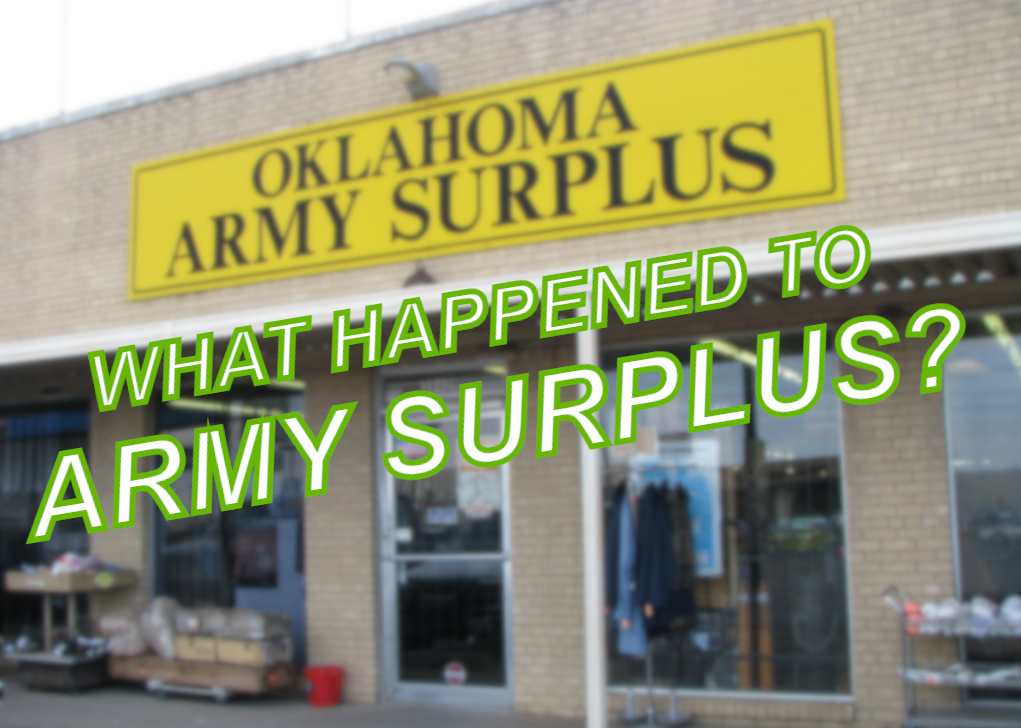

Just a few days back, I saw a Facebook notification that echoes something I’ve heard far too often over the past few years: Another brick-and-mortar army surplus store is closing down. In this case, it’s Tulsa-based Oklahoma Army Surplus, and the news was especially gloomy because the store sounded exactly like the kind of place I like to shop.
Here’s how their website describes their business:
We were established in 1957 and have been in the same location since the start. It is our desire to maintain the standards of the traditional Army surplus with the convenience of 21st century technology. Our military gear dates from the Civil War to present, with boots, uniforms and field gear…
… and on it goes, talking about all the hunting gear, camping supplies and other assorted jumble for sale at their storefront. Now, it’s all 50 percent off, storewide, while supplies last, ‘cuz they’re closing up shop.
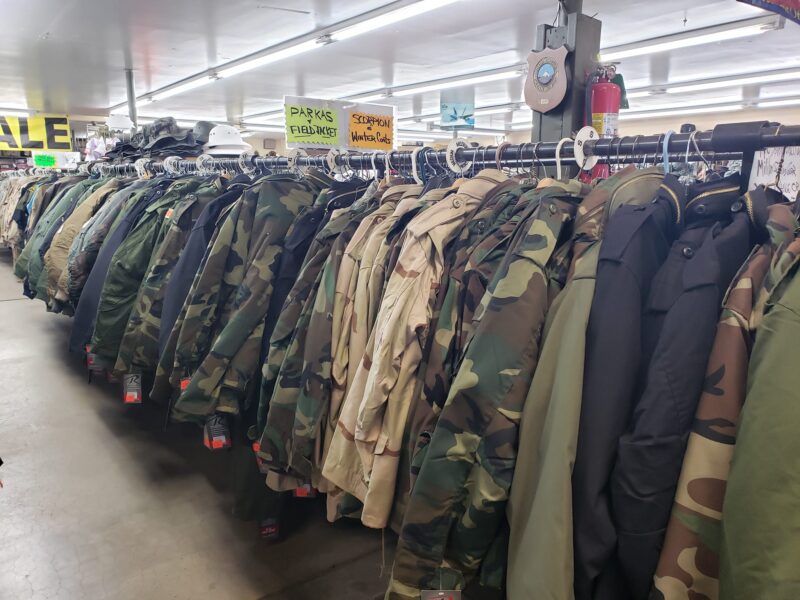
What a bummer, to see another old-school army-navy store bite the dust, because it’s getting harder to find one that’s up to “the standards of the traditional Army surplus,” as their website puts it.
It wasn’t always that way. Growing up in the cash-strapped northeast, nobody I knew had a lot of money for hunting gear, and the army surplus store was where we shopped as a result. My dad’s deer gun was an old sporterized Lee-Enfield .303 bought at the surplus store; that’s where a lot of his other equipment came from too, including Cold War-era C-rations that were still good when he opened the can 20 years later.

I did the same thing when I started spending my own money. I wore army boots on my motorcycle, and strapped an army backpack to the seat, carrying all my gear. My friends and I all wore green wool “commando sweaters” in duck blinds and deer blinds for years; they were cheap, warm and quiet. We wore army jackets to keep off the rain; old gas mask bags and medical satchels carried our calls, our shells, our sandwiches. We used army surplus canteens and cooksets when we camped. I wore a Dutch army knock-off of the M65 everywhere for years, not as a fashion statement, but because I couldn’t find a jacket that was better-made, and it was only $5 at the surplus store.
All that gear we wore was heavy and not necessarily high-tech, but it was well-made, high-quality stuff, and a lot of it is impossible to find now. Over the last 20 years, but especially the last decade, any brick-and-mortar army surplus stores I’ve popped into have an increasingly large percentage of made-in-China tactical equipment, outdoors gear and knock-offs of actual army surplus, and less and less of the real thing. The military equipment they do have remaining is often in rough shape, or in odd sizes, or both. Or it’s oddball equipment that, realistically, nobody wants—scratched anti-laser goggles, or cadet berets, or bayonet frogs. No matter how much you mark that stuff down, good luck finding a buyer.
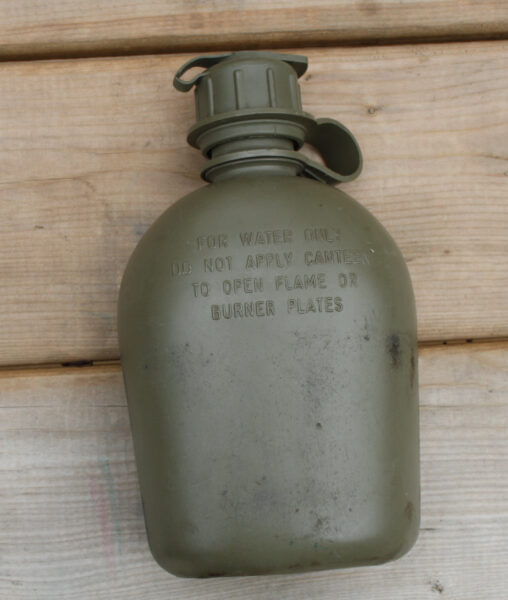
It’s a long, long way from the old King Sol’s catalog my dad had, with everything from tents to air force parkas to Swedish army helmets to a page with more milsurp rifles than a schoolkid could even dream of. Turkish, Brazilian, Chinese, Spanish and Swedish Mausers; Russian Mosin-Nagants; Czech Vz.52/57s; British Jungle Carbines; Egyptian Hakims; American Garands—it was a treasure trove. And on the facing page, Colt AR-15s, Maverick 88 bullpups, Armscore M1600Rs, and lots more.
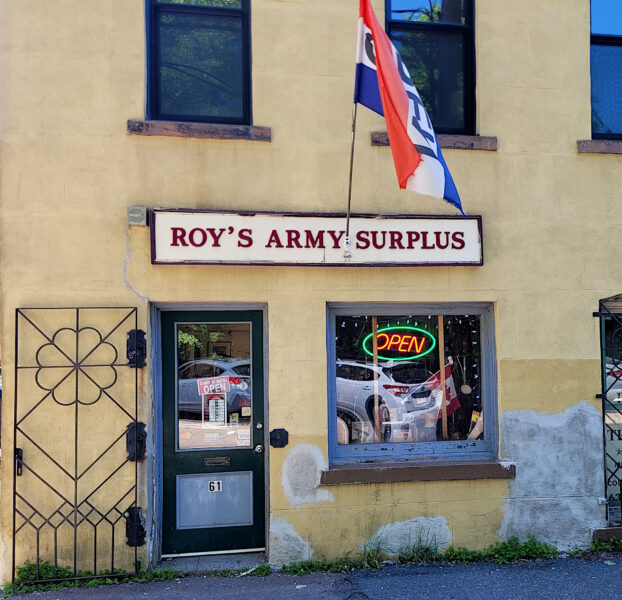
I asked the guy who runs my local army surplus about the changes in the products over the years, and the answer was exactly what you’d expect. At the end of the Cold War, countries had shiploads of equipment to get rid of as they modernized. Now, most of that supply has dried up; a lot of surplus was sold off, and now, some of it is going to Ukraine (the supply of Russian SKS rifles has completely dried up in Canada). In the U.S. market, GWOT surplus has started to hit the mainstream, but that hasn’t happened in every country, probably partly because the U.S. did far more of the heavy lifting in the GWOT than anyone else.
So, the trend will continue as the traditional supply lines dry up. And yet, army surplus isn’t dying out just yet, because while the oldsters are closing down their stores, there still seems to be a huge demand with new customers, and new online sales.
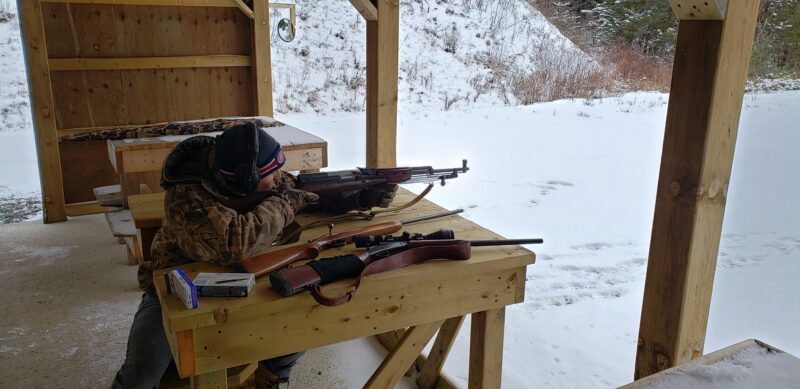
Some stores have been online for a good long time and done very well at it—the Sportsman’s Guide comes to mind, and Coleman’s. Varusteleka, in Finland, has excellent overseas shipping prices, and I’ve probably spent more money on gear from them than any other surplus store over the past decade.
But there are still new outfits starting up. Since COVID, ODGG (Operational Detachment Gorilla Gang) has been tearing up social media by storm thanks to founder @pnwguerrilla and his constant posting. It’s not just blatant marketeering (“Hey, buy these camo pants!”). The founder (real-life name Alex Roggenkamp) is constantly urging his customers to better themselves, and he practices what he preaches, with regularly scheduled rucks that put all that surplus gear to good use. There’s no whinging about how heavy a wool blanket is, compared to an ultralight sleeping bag; on a camping trip with @pnwguerrilla, you’ll use that wool blanket because it’s still an intrinsically good piece of kit that works as well as the day it was issued.

It’s ironic, because Roggenkamp has proven to be really good at selling surplus, but he never even set out to do so. He had been selling hand-sewn pouches for web gear when he got a chance to buy out a military surplus collection as the owner left the country. He turned an $4,000 initial investment into a full-blown business.
Now, even as brick-and-mortar stores die out, the ODGG store is growing; being online means more eyes can see your product, says Roggenkamp, and he sees opportunities for even more growth. A massive fan of M81 Woodland camo, he’s recently managed to suppress his gag reflex and start selling digital camo gear. But whether it’s old-school Cold War gear or modern GWOT equipment, what it boils down to is, Roggenkamp needs to find more surplus for reasonable pricing.
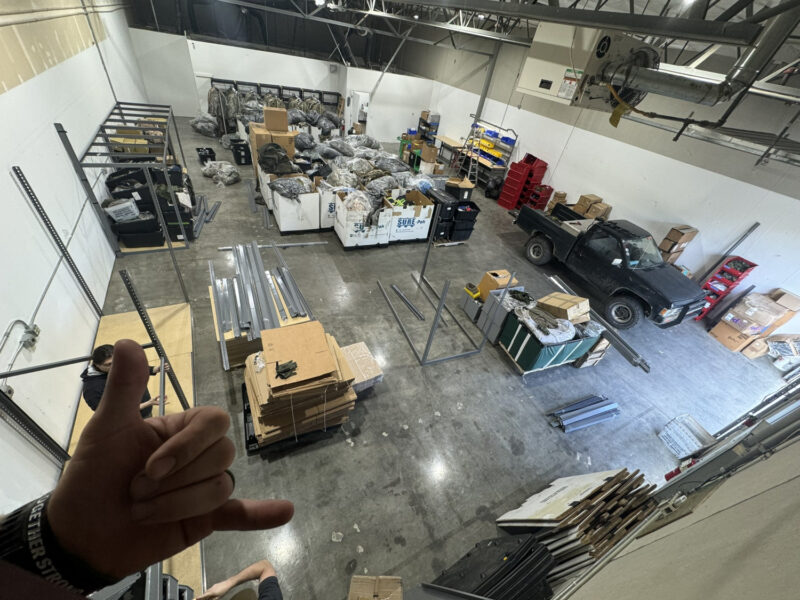
“There is still a lot of surplus available out there,” he says, “But some people think they are sitting on gold.”
But if he can get the gear, it seems he’ll have no problem selling it. The ODGG store seems to have tapped into a market that others have ignored for years; not elderly collectors, not Fudds looking for cheap camping and hunting equipment, but a motivated, younger buyer who is looking for gear that can sustain them as they hike in full kit, either training themselves or prep for the first time, or rebuilding physicality lost since they left military service—all while the guy who sold them the gear is on social media mocking them like a mean drill instructor.
Roggenkamp says that, to his knowledge, nobody else markets the way he does, and he’s not even sure they they should. He isn’t sure why it works, except he thinks maybe people are looking for honesty, something that’s hard to find in any retail business.
Maybe this is the future of army surplus stores—not as retail locations that tend to attract oddball customers, with a constant smell of mildew and leather, but as online communities that can appreciate the gear for what it is, and what it lets them do—get outside and challenge the world head-on, at a price they can afford.
Trending Products












